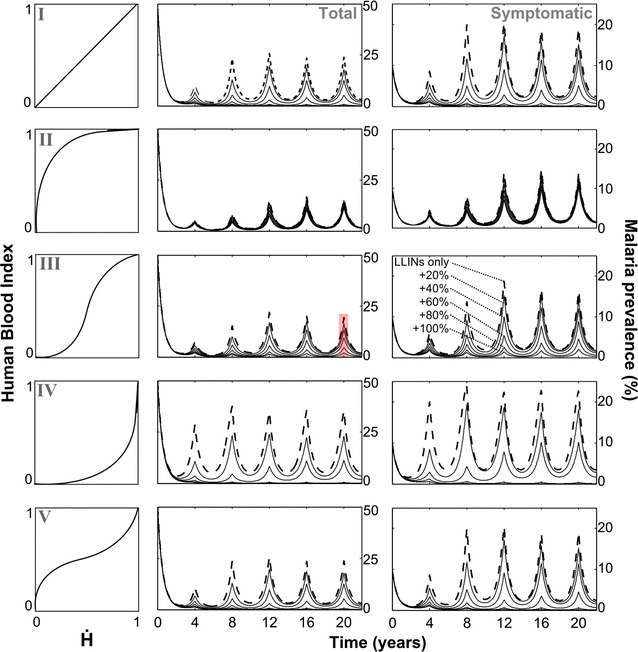Fig. 2.

Vector ecology determines the impact of complementing LLINs with endectocide-treated cattle. Left column qualitatively distinct biting behaviours (Types I–V) arise from different functional relationships between the human blood index and the availability of humans relative to all potential blood hosts (). Middle column total malaria prevalence during the simulated control campaign. Right column symptomatic malaria prevalence during the campaign. Dashed lines LLINs as a stand-alone strategy; solid lines denote the additional control levels associated with complementing LLINs with 20, 40, 60, 80, and 100% coverage with endectocide-treated cattle. Oral treatment with 1.5 mg/kg fipronil is simulated to occur every 10 weeks (application frequency is fully explored in Fig. 3). Simulations were initiated at a steady state of (total) malaria prevalence of 50%. Parameter (α,β) values used to produce the different biting Types I–V, respectively, are: 1,1; 0.5,2; 2,2; 2,0.5 and 0.5,0.5. Results are shown above for = 0.5. A sensitivity analysis of these parameters is shown in the Additional files. The red stripe shows how these results correspond to output in Fig. 3 in which it is shown how the peak infection level just prior to the final control distribution round is impacted by different endectocidal application frequency and coverage levels
